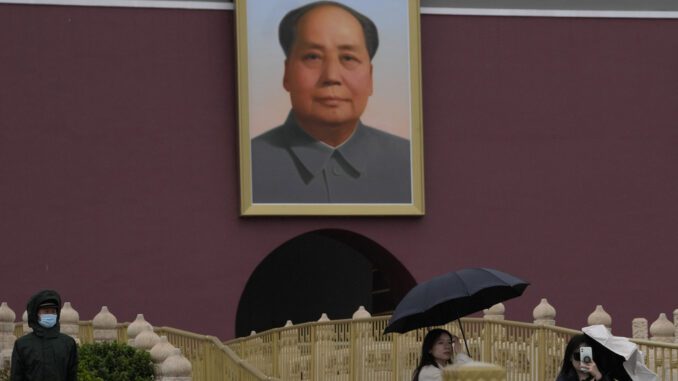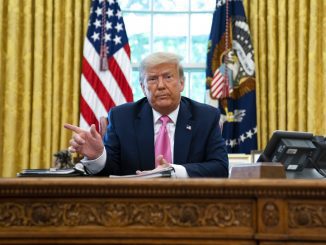
Mao Zedong became one of the last century’s most powerful dictators by completely transforming Chinese society through a systematic use of violence, coercion, and aggressive propaganda. His method was so unique — and ruthlessly effective — it was codified by historians and political scholars as Maoism.
Today, a new kind of Maoism is developing in the American left, and it is a direct threat to the American traditions of individual rights, the rule of law, the Constitution, and personal freedom.
I was recently reminded how real the threat of renewed Maoism is — and how little it is understood — when a Chinese American woman confronted me at a hotel during breakfast.
She was so emotional, she was shaking. She said, “you must save America.”
She explained that she left China 30 years ago after Mao’s dictatorship destroyed the lives of Chinese citizens with his bloody 10-year Cultural Revolution. When she came to America, she said she felt she had found freedom. What she said next struck me:
“Now, I am watching people who are disciples of Mao — whether they know it or not. They are going to destroy my new country and turn it into the nightmare I fled three decades ago.”
Her message resonated with me intellectually and emotionally. As an historian, I have deeply studied Mao and the Chinese Communist dictatorship.
The Maoist levels of violence and mass murder have not occurred here (thank God), but the patterns of psychological coercion and propaganda are thriving. Maoist-style groupthink and forced confession and coercion have been spreading through our top universities and the corporate news media for decades. They have recently permeated our governmental bureaucracies, military, and even large American corporations.
I was especially impacted by the woman’s warning, because I previously spoke with Xi Van Fleet, a survivor from Communist China who played a leading role in standing up to the Loudon County, Va., school board. Board members were committed to teaching propaganda and ignoring parents’ concerns about transgender policies. Xi’s anger and clarity of message earned a great deal of media coverage and helped oppose the school board position.
After thinking about my conversation with Xi and the woman at breakfast, I sought out other insights from people I trust on this arising threat.
The fear of a new American-style Maoism was reinforced by Dimon Liu, a brilliant human rights activist who is herself a survivor from China. She wrote to me in an email that the key to the new style of Maoism in America is identity politics.
Weaponizing class through critical class theory and other pseudo-scholarly propaganda allows the new Maoists to designate what classes are approved or blacklisted — then label who belongs to what class on their terms.
Dimon wrote, “Our identities are who the usurpers of power say we are, and we get persecuted or rewarded accordingly. … Maoist identity politics has come to America — just switch ‘class’ to ‘races,’ and things fall into the exact same places.”
As my co-author Christensen wrote to me, you can see new Maoist patterns in America through the left’s radicalization of youth, destruction of history, and widespread use of propaganda.
“Recall the objective of Mao’s Cultural Revolution (in addition to eliminating his opposition) and the aim of the Red Guards was to destroy the ‘four olds:’ old ideas, old customs, old habits, and old culture. Mao made an enemy out of history and tradition,” she wrote.
When I reached out to Ben Domenech, the brilliant editor of “The Transom,” he wrote me that Maoism is, “distributed [or] networked tyranny: The motivated masses provide the mechanism, not a central organ. Nazism required the Gestapo, Stalinism required the NKVD, Maoism can rely on the man on the street.”
Domenech then wrote there is a “moving frame of reference: there is no logical endpoint to the agenda. Any effort to assert a terminus is taken as evidence of inadequate dedication. The result is an organic drive toward accelerating radicalization — a society-wide example of the ‘who first stops clapping for Stalin’ problem… [Finally, Maoism must include] the destruction of institutions. Institutions are limiting mechanisms: you take them over, yes, but only to destroy them.”
We need to be clear about the nature of this new Maoism with American characteristics — and take head-on those who use Maoist tactics to dominate our schools, media, bureaucracies, companies, and society.
Our freedom is at stake.
As one Chinese survivor asked me, “I could flee tyranny and come to America. But if tyranny comes to America, where can I go to find freedom?”
This question should haunt all of us.



